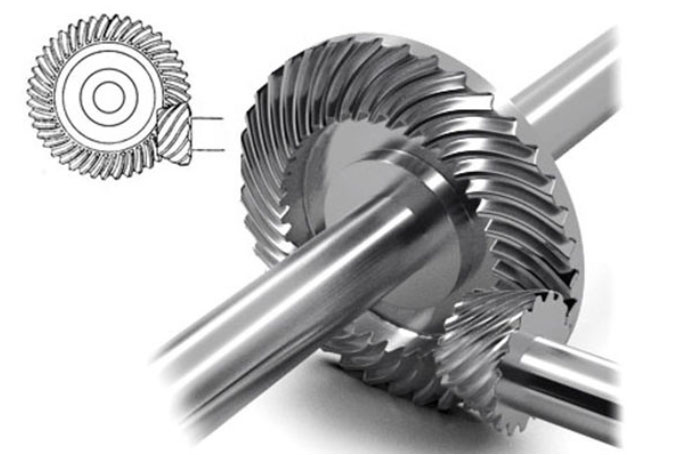Hypoid gears are a type of bevel gears that possess unique design features and offer distinct advantages in various applications. Understanding the design and function of hypoid gears is crucial for engineers, designers, and manufacturers working with these specialized gears. In this article, we will demystify hypoid gears, exploring their design principles, functional characteristics, and application considerations.

- Introduction to Hypoid Gears:
- Definition and basic concept of hypoid gears.
- Comparison with other types of bevel gears, such as straight bevel and spiral bevel gears.
- Key differences and advantages of hypoid gears.
- Hypoid Gear Design:
- Gear geometry and tooth profile of hypoid gears.
- Differences in tooth surface characteristics compared to other bevel gears.
- Design considerations for achieving optimum gear performance and load distribution.
- Gear Meshing Principles:
- Understanding the meshing behavior and contact patterns of hypoid gears.
- Analysis of the gear tooth contact and load distribution.
- Impact of gear design parameters on meshing efficiency and noise generation.
- Function and Application Considerations:
- Overview of industries and applications that commonly use hypoid gears.
- Advantages and benefits of hypoid gears in specific applications, such as automotive differentials, power tools, and heavy machinery.
- Factors to consider when selecting hypoid gears for a particular application, including torque capacity, efficiency, noise level, and service life.
- Manufacturing Processes and Challenges:
- Overview of manufacturing techniques for hypoid gears, including gear cutting, grinding, and finishing.
- Challenges and considerations in the production of hypoid gears, such as complex geometry, tooth surface quality, and precision alignment.
- Gear Performance and Efficiency:
- Evaluation of gear performance parameters, such as efficiency, load-carrying capacity, and torque transmission.
- Factors affecting gear efficiency and strategies for optimizing power transmission.
- Noise and Vibration Control:
- Analysis of noise and vibration characteristics in hypoid gear systems.
- Noise reduction techniques, including gear design modifications, surface treatments, and lubrication optimization.
- Maintenance and Lubrication:
- Importance of proper maintenance practices for hypoid gears.
- Lubrication requirements and considerations for ensuring gear performance and longevity.
- Advancements and Future Trends:
- Emerging technologies and innovations in hypoid gear design and manufacturing.
- Potential applications and areas of improvement for hypoid gears.
- Case Studies and Practical Examples:
- Real-world examples showcasing successful implementation of hypoid gears in different industries.
- Lessons learned, best practices, and success stories.
Understanding the design principles and functional characteristics of hypoid gears is crucial for maximizing their performance and ensuring their reliable operation. This article aims to provide a comprehensive overview of hypoid gears, shedding light on their design, function, applications, manufacturing processes, and future trends. By demystifying hypoid gears, engineers and manufacturers can harness their full potential and make informed decisions when incorporating them into various mechanical systems.
